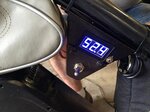Over50
Well-Known Member
Oh man I don't understand why some bike companies go with 2 small capacity battery packs...
I'm with Alaskan on this. I like the form factor and modularity of the separate packs. I can take one or I can take two dependent on need. Often one is all I need. My Riese and Muller has a convenient bag that fits into the second battery harness and I use that when only using one battery. The Bosch Powerpacks fit easily in a backpack. One 500wh pack is easy to remove from the bike, throw in my backpack and take to the office. Perhaps having separate but modular packs also provides some insurance in case of pack failure. If one of my packs fails then I still have one to ride with whilst I wait for a replacement.
